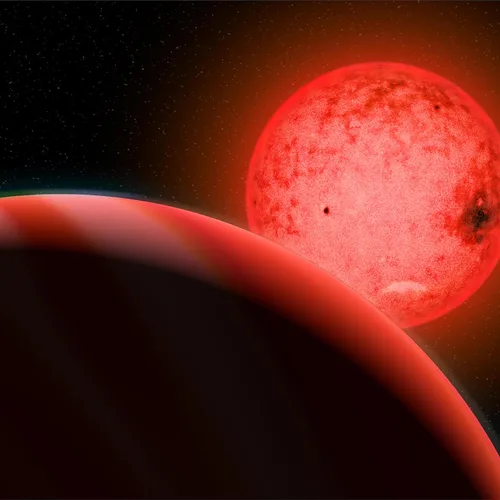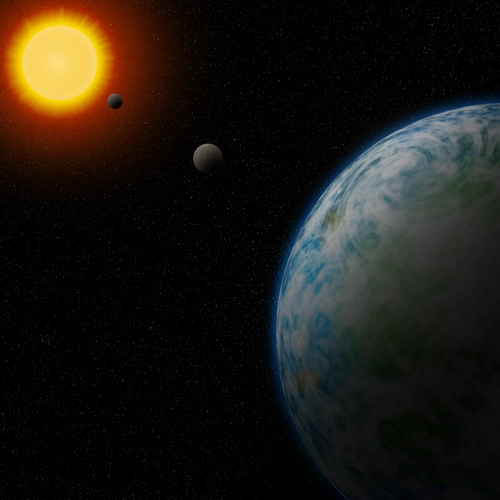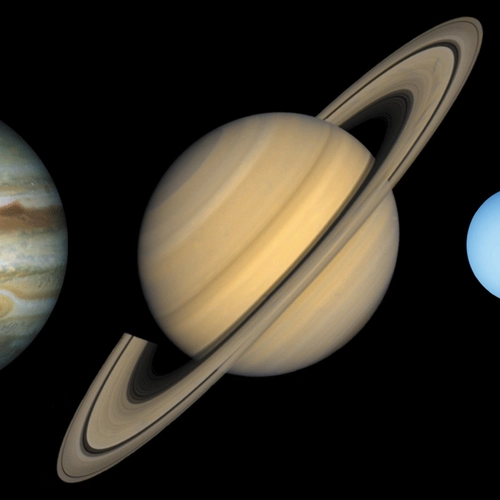Research
It is generally believed that the Sun's planets formed by collisions and mergers between many small bodies called planetesimals. In the outer Solar System, far from the Sun, these planetesimals would have been composed of a mixture of many materials including water and other volatile compounds essential to life. Closer to the Sun, in the region now occupied by Earth, temperatures were too high for volatile materials to condense. Planetesimals here were largely composed of dry rock and metal.
Chambers uses his numerical models of planet formation to assess how likely it is that volatile-rich material from the outer Solar System would have been transported to Earth while it was still growing, enabling the formation of the planet's atmosphere and oceans. This work is also being extended to other planetary systems to help assess the likely compositions of newly discovered extrasolar planets.
The outer Solar System is dominated by four giant planets that are tens to hundreds of times more massive than Earth. These giants are largely composed of gases such as hydrogen and helium. It is likely that these planets were once smaller, solid bodies like the terrestrial planets. However, the Sun's outer planets grew large enough for their gravity to capture large amounts of gas from the cloud of gas surrounding the young Sun. Chambers is using simulations of planet formation to find out why planets in the outer Solar System grew larger than those closer to the Sun, and how they were able to grow fast enough to accrete large amounts of gas before the Sun's gas-rich cloud dispersed.
There are two main ways we think planets form in these protoplanetary disks. The core accretion mechanism holds that a gas-giant first forms a large, mostly rocky, core with enough mass and hence gravity to pull in gas from the surrounding disk to form a thick atmosphere, eventually becoming huge gas worlds.
In 2017, modeling the core accretion method, John Chambers found that planets somewhat smaller than the Moon are large enough to capture a thin atmosphere. The atmosphere grows thicker and hotter as the planet gets bigger. Once the planet is similar to Mars in size, it can form an ocean. At larger masses, the planet's ocean boils and the atmosphere becomes a dense mixture of steam and hydrogen and helium. When a planet reaches a few times the mass of Earth, the atmosphere will grow rapidly, faster than the solid part of the planet, eventually forming a gas giant planet like Jupiter.
The competing idea is the disk instability method, in which uneven swaths of dust and gas from the protoplanetary disks are big enough to create their own gravitational centers and condense in on themselves into protoplanets. It’s possible that planet formation is some mix of the two.
One of the great surprises from the discovery of extrasolar planets is that planetary systems are highly diverse, and many look very different from the Solar System. In particular, many systems contain several planets a few times more massive than Earth in tightly packed orbits that are closer to their star than Mercury is to the Sun. This suggests that the clouds of material surrounding other stars when they were young were either very different from the Sun's initially or they evolved in a different way.
Chambers is using his numerical models of planet formation to determine whether similar starting situations can evolve along different paths, allowing the formation of a variety of planetary systems. This work will also shed light on why so many other systems look different from our own, and what special circumstances may have led to the formation of the Solar System.
CV
- Ph. D., Physics/Astronomy, University of Manchester, Manchester, UK (1994)
- BA, Physics, University of Oxford, Oxford, UK. (1990)
- 2004–present: Faculty member, Carnegie Institution for Science, Washington DC, USA
- 2012: Paolo Farinella Prize for contribution to the field of formation and early evolution of the Solar System
- 2002–2004: Research Scientist, SETI Institute, Mountain View, California, USA.
- 1999–2002: NRC Research Associate, NASA Ames, Moffett Field, California, USA.
- 1996–2001: Research Astronomer, Armagh Observatory, Armagh, Northern Ireland, UK.
- 1994–1996: Postdoctoral Fellow, Carnegie Institution for Science, Washington DC, USA.
- 1992–1994: Predoctoral Fellow, Center for Astrophysics, Cambridge, Massachusetts, USA.
Media & Recordings
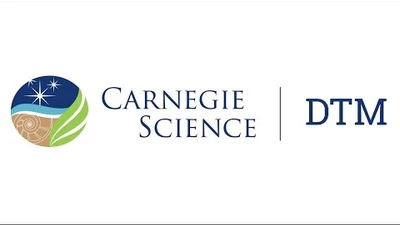
Carnegie Neighborhood Lecture Series Presents "The Mystery of Planet Formation" by John Chambers
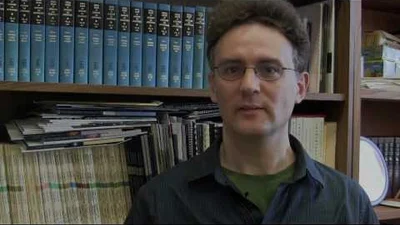
Meet John Chambers, DTM Staff Scientist
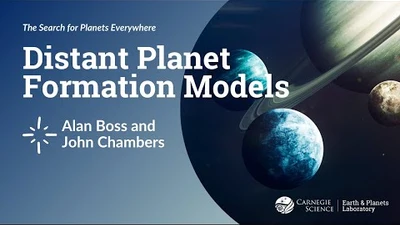
Distant Planet Formation Models. I. Observations and Disk Instability. II. Core and Pebble Accretion

